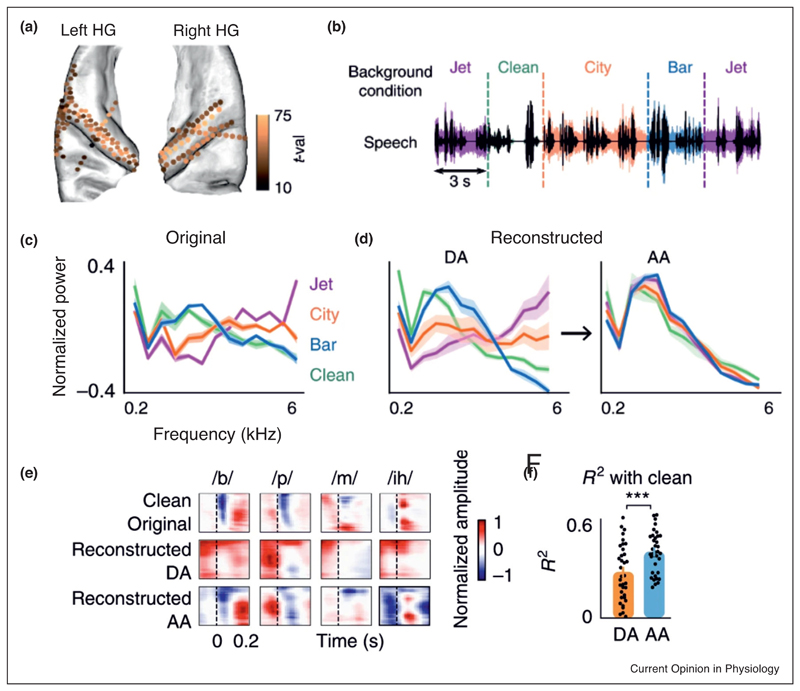Figure 3.
Adaptation of the human auditory cortex to changing background noise enables robust representation of the phonetic features of speech. (a) Recordings in human auditory cortex showing electrode locations where significant responses to speech (t-val > 10, t-test speech versus silence) were found. HG, Heschl’s gyrus. (b) Waveforms of the sounds used: speech (shown in black) was presented alone (Clean) or with different types of background noise (shown by the colors for Bar, City, Jet backgrounds), which changed randomly every 3 or 6 s. (c) Average frequency power from the spectrograms for each stimulus type. (d) A reconstruction model was trained on the responses to clean speech and used to reconstruct spectrograms from the neural responses to speech with added background noise. Left panel shows the average reconstructed frequency profiles during adaptation (DA), which resemble the frequency profiles for each noise type. Right panel shows that after adaptation (AA) of cortical responses, the average reconstructed frequency profile in each case closely resembles the frequency profile of clean speech. (e) Original and reconstructed spectrograms of four example phonemes. The spectrotemporal features that distinguish each of these phonemes in the spectrograms reconstructed from cortical activity are initially distorted during adaptation to the noise (0–0.4 s after the change in stimulus), but are evident after adaptation (2.0–2.4 s after the transition). For example, the phoneme /b/ is characterized by an onset gap followed by low-frequency spectral power. Both the gap and the low-frequency feature are masked during adaptation, but are subsequently restored after adaptation. (f) Correlation between the reconstructed phoneme spectrograms during and after adaptation with the clean phoneme spectrograms. Adapted from Khalighinejad et al. [37 ••].

